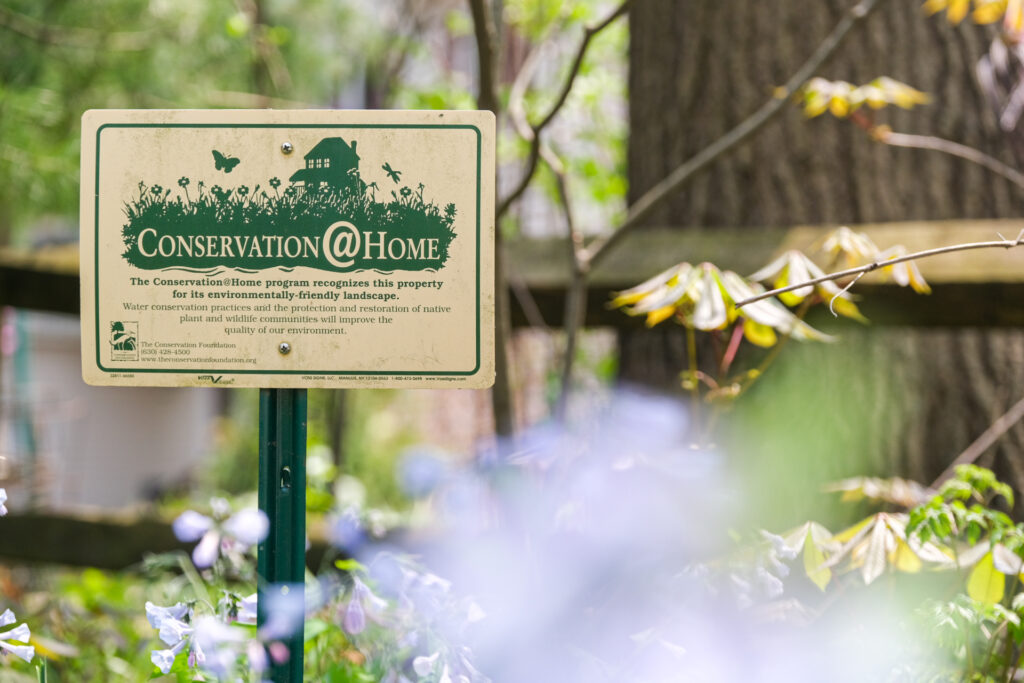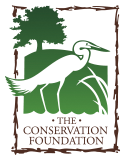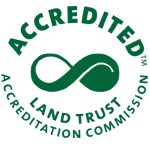Spring wildflower season is a special time of year. For a short window from about mid-April to mid-May, native wildflowers bloom across the woodlands and delight our local nature lovers. In some places, a great variety of wildflowers dapple the ground, while in other places, you’ll find magnificent seas of Bluebells, Trout Lilies, and even Large Flowering Trilliums.
Thanks to protected land in forest preserves, parks, and conservation easements, we get to enjoy spring wildflowers close to our neighborhoods. Be sure to mark your calendar each spring to get out and explore the new flowers popping up every week!
Here are some of the wildflowers we found blooming in local woodlands this spring:
1. Bloodroot, Sanguinaria canadensis
Bloodroot sends forth a large white flower that only blooms for one to two days before fading away. Each plant also has one uniquely shaped leaf. Bloodroot is spread by ants that are attracted to a fleshy part of its seed. The ants bring the seeds home, eat the fleshy part, and leave the rest of the seed to sprout in a new location.
2. Spring Beauty, Claytonia virginica
Spring Beauties are small, white flowers with pink veins. Each plant has two narrow leaves that almost sparkle in the sunshine. As if their delicate flowers and sparkly leaves weren’t cute enough, Spring Beauties also have tiny tubers nicknamed “fairy spuds.”
3. Hepatica, Hepatica spp.
Hepaticas are an early spring wildflower that produce a group of single flowers on thin stalks. If you miss the flowers in the spring, you can still find it’s unique, three-lobed leaves which last through the winter.
4. White Trout Lily, Erythronium albidum
Immature Trout Lilies have a single, mottled leaf. After 4-7 years, they will sprout a pair of leaves and finally send up a single white flower with curved-back petals. They are fairly common plants, and you’ll often see a sea of Trout Lily leaves covering large areas of the forest floor.
5. Rue Anenome, Anemonella thalictroides
When you’re first starting to learn local wildflowers, it’s difficult to tell Rue Anenome from False Rue Anenome (Enemion biternatum). Rue Anemone flowers have 5-10 petal-like white sepals, while False Rue Anemone flowers have 5 petal-like white sepals. There are also small differences in their leaves. For instance, False Rue Anemone leaflets have deeper, more rounded lobes.
6. Virginia Bluebells, Mertensia virginica
Virginia Bluebells have blue tubular flowers that hang down like bells and sway gracefully in the breeze. Virginia Bluebells have the tendency to cover large areas of the woodlands, making for a beautiful but fleeting springtime paradise.
7. Dutchman’s Breeches, Dicentra cucullaria
Dutchman’s Breeches gets its name for its group of flowers that look like little upside-down pants. They have distinct feathery leaves that you can still spot after they are done blooming. Dutchman’s Breeches seeds are also distributed by ants.
8. Cutleaf Toothwort, Dentaria laciniata
Cutleaf Toothwort has a cluster of 4-petaled, pinkish white flowers. Its leaves are deeply lobed with toothed or zig-zaggy edges. Their flowers are replaced by slender green seedpods, similar to other plants in the Mustard family.
9. Trillium, Trillium spp.
Trilliums, like the “Tri” in its name suggests, have three leaves, three petals, and three sepals. The two common types of trilliums in our area are Prairie Trillium (Trillium recurvatum) with mottled leaves and a small red flower with petals that curve inward and Large Flowering Trillium (Trillium grandiflorum) with solid green leaves and a large white flower.
10. Woodland Phlox, Phlox divaricata
Woodland Phlox is a later-blooming spring wildflower. Woodland Phlox has blue-violet flowers with 5 petals that are fused at the base. The flowers are pollinated by long-tongued bees, bee flies, butterflies, skippers, and moths.
Written and photographed by Lea Rodbarry, Communications Specialist for The Conservation Foundation.
Join Conservation
@Home
Join Conservation@Home

Are any of these native flowers blooming in your garden? If so, your garden may be eligible for Conservation@Home certification!
Conservation@Home is a program for homeowners who are helping local nature by gardening with native plants, creating wildlife habitat, conserving water, and more. Homeowners who make these earth-friendly choices are certified as a Conservation@Home property and rewarded with a Conservation@Home sign to post in their yard.



